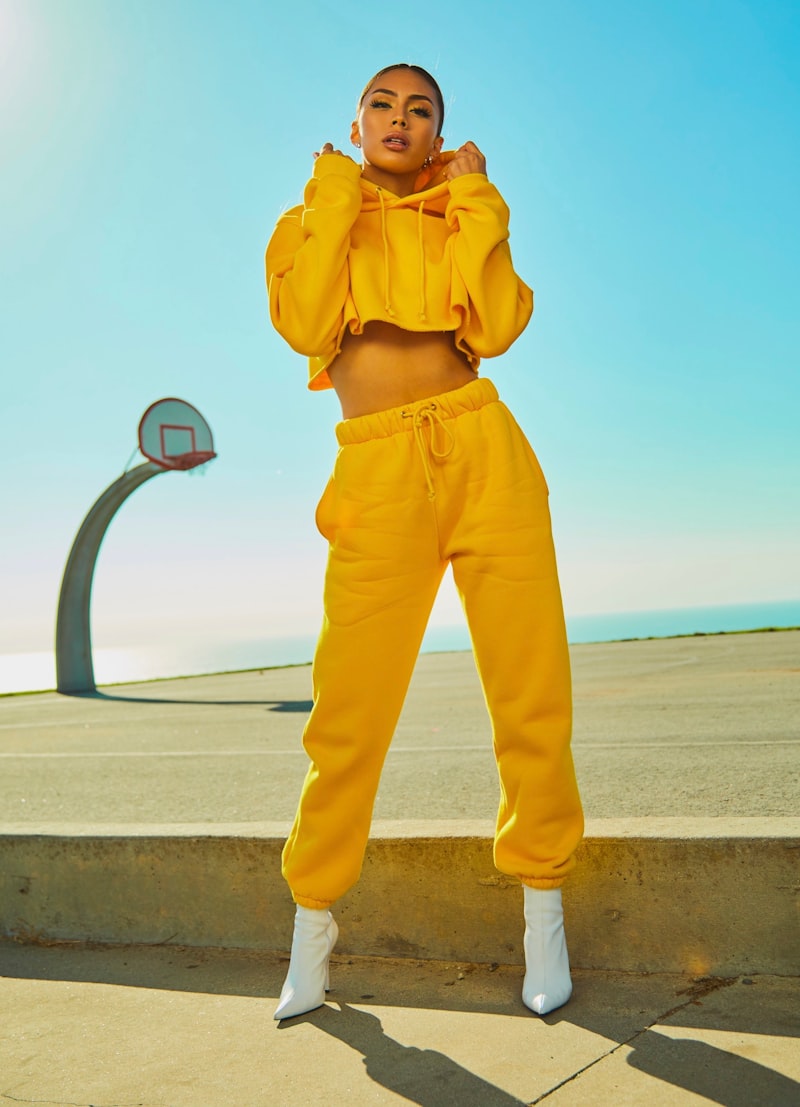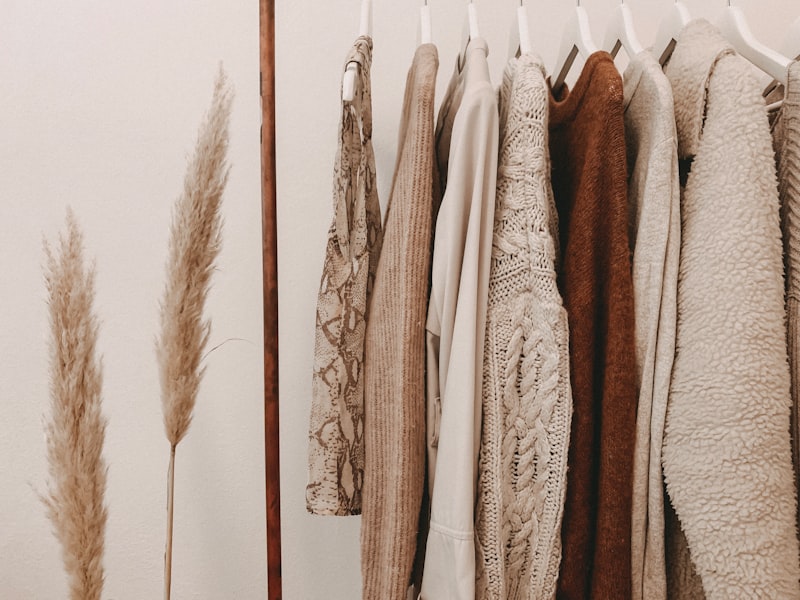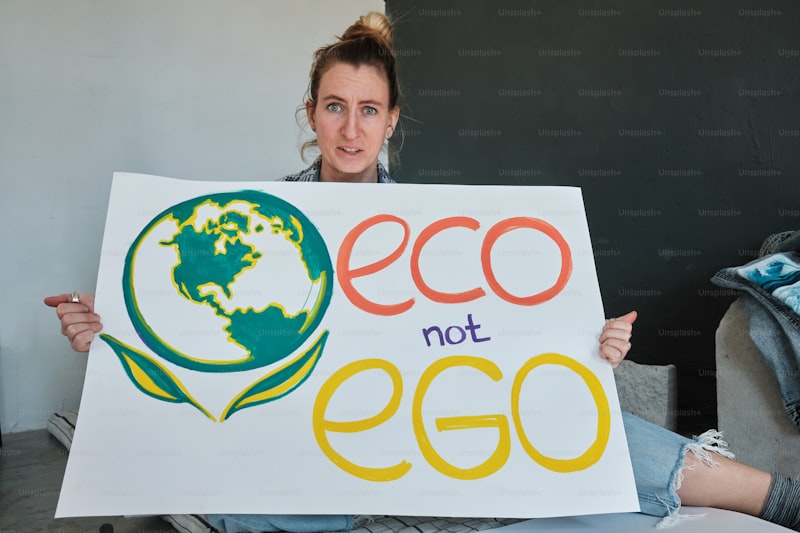One of the key aspects of sustainable fashion is opting for clothing made from organic or recycled materials. Organic cotton, for instance, is grown without harmful pesticides, which reduces environmental damage and promotes healthier farming practices. Similarly, recycled polyester utilizes plastic waste to create new garments, reducing landfill waste and conserving resources.
Another crucial consideration is supporting brands that prioritize fair labor practices. Ethical fashion ensures that workers involved in the production process are treated fairly, paid decent wages, and operate in safe working conditions. By supporting these brands, consumers contribute to positive social impacts globally.

Additionally, choosing timeless pieces over fast fashion trends promotes sustainability. Investing in durable clothing that withstands the test of time reduces the need for frequent replacements, thus decreasing overall textile waste. Versatile items that can be styled in multiple ways also encourage sustainable wardrobe choices.
Furthermore, embracing second-hand and vintage clothing is a sustainable alternative to purchasing new items. Thrift shopping not only reduces the demand for new production but also gives pre-loved garments a new lease on life. It’s a budget-friendly and eco-conscious way to refresh your wardrobe.
Sustainable fashion choices empower consumers to make a positive impact on the planet and support ethical practices in the fashion industry. By opting for organic materials, supporting fair labor, choosing durable pieces, and exploring second-hand options, individuals can contribute to a more sustainable future while expressing their unique style.
Eco-Chic: The Top Sustainable Fashion Trends Set to Dominate 2024
Imagine a wardrobe where every piece tells a story of eco-friendly craftsmanship. This year, sustainable fashion is all about embracing materials that leave a lighter footprint on the planet. Fabrics like organic cotton, hemp, and recycled polyester are gaining popularity for their reduced environmental impact. These materials not only look good but also feel good knowing they support ethical sourcing and production practices.
One of the standout trends for 2024 is upcycling. It’s about transforming old garments into new treasures, giving new life to fabrics that might otherwise end up in landfills. Upcycled fashion is not just a statement; it’s a commitment to creativity and sustainability. From vintage finds to repurposed textiles, every piece celebrates the art of mindful consumption.
Another key trend is transparency in fashion supply chains. Consumers are increasingly demanding to know where and how their clothes are made. Brands that prioritize transparency are gaining trust by sharing their production processes and ethical practices. This shift towards accountability empowers consumers to make informed choices that align with their values.
Innovative technologies are also driving sustainable fashion forward. From 3D printing to biodegradable textiles, designers are exploring new ways to minimize waste and maximize efficiency. These advancements pave the way for a fashion industry that values innovation as much as aesthetics.
As we look towards 2024, eco-chic fashion isn’t just about what we wear; it’s about the impact we make with our choices. By embracing sustainable trends, we can redefine fashion’s future—one garment at a time.
From Runway to Wardrobe: How Sustainable Fashion is Redefining Style in 2024
Imagine fashion as a cycle where every choice impacts our planet. Sustainable fashion embraces this concept by promoting practices that minimize environmental impact. From organic materials to recycled fabrics, every garment tells a story of eco-consciousness. Brands are not just creating clothes; they’re crafting narratives of sustainability.
But what makes sustainable fashion so appealing beyond its eco-friendly tag? It’s the fusion of ethics with aesthetics. Picture wearing a beautifully designed dress that not only flatters your figure but also aligns with your values. That’s the allure of sustainable style—it’s fashion with a purpose, fashion that speaks volumes.
Moreover, sustainable fashion isn’t just a trend; it’s a movement rooted in innovation. Designers are pioneering new techniques to reduce waste and carbon footprint. They’re exploring biodegradable materials, zero-waste patterns, and even upcycling vintage fabrics into contemporary pieces. It’s fashion that looks forward while respecting the past.
And let’s not forget the impact on communities. Ethical fashion practices ensure fair wages, safe working conditions, and support for local artisans. It’s fashion that cares for the people behind the seams, empowering them with dignity and respect.
As consumers, our choices drive this change. By opting for sustainable brands, we advocate for a fashion industry that values both style and sustainability. It’s about asking questions like “Who made my clothes?” and embracing brands that transparently share their sourcing and production journey.
In essence, sustainable fashion isn’t just redefining style in 2024; it’s reshaping our relationship with clothing. It encourages us to cherish quality over quantity, creativity over conformity, and a planet-friendly mindset in every purchase. So, as you explore your wardrobe this year, consider the story behind each garment. Because fashion isn’t just about what you wear—it’s about how your choices shape the world around you.
Ethical Elegance: 10 Must-Have Sustainable Pieces for Your 2024 Wardrobe

In the realm of fashion, sustainability isn’t just a trend; it’s a commitment to ethical elegance that resonates with conscious consumers worldwide. As we step into 2024, the demand for eco-friendly fashion choices continues to rise, urging fashionistas to embrace styles that make a positive impact on both the planet and personal style.
-
Organic Cotton Basics: Upgrade your wardrobe essentials with organic cotton t-shirts and tanks. These pieces not only feel great against your skin but also support organic farming practices that minimize environmental impact.
-
Timeless Hemp Blazer: A hemp blazer adds a touch of sophistication while being incredibly durable. Hemp requires minimal water and no pesticides to grow, making it a sustainable choice for the environmentally conscious dresser.
-
Recycled Denim Jeans: Opt for jeans made from recycled denim. These jeans reduce landfill waste and embody the classic denim look with a modern, eco-friendly twist.
-
Upcycled Leather Bag: An upcycled leather bag combines style with sustainability by repurposing leather scraps into chic accessories. Each bag tells a unique story while reducing the demand for new leather production.
-
Vintage Silk Scarf: Embrace timeless elegance with a vintage silk scarf. Buying vintage not only adds a touch of luxury to your outfit but also reduces the carbon footprint associated with producing new silk.

Bamboo Sunglasses: Protect your eyes in style with sunglasses made from sustainable bamboo. Bamboo is fast-growing and requires minimal resources to thrive, making it an ideal material for eco-friendly eyewear.
-
Ethically-Made Sneakers: Look for sneakers crafted under fair labor conditions using sustainable materials like organic cotton or recycled polyester. Ethically-made sneakers support workers’ rights and reduce environmental impact.
-
Linen Summer Dress: Stay cool and stylish in a linen summer dress. Linen is a renewable resource that biodegrades naturally, offering breathable comfort while being kind to the planet.
-
Repurposed Wool Coat: Invest in a repurposed wool coat that blends warmth with sustainability. Wool is naturally renewable, and repurposing old wool garments reduces waste in the fashion industry.
-
Sustainable Jewelry: Complete your look with jewelry made from recycled metals or ethically-sourced gemstones. Sustainable jewelry pieces not only sparkle but also reflect your commitment to ethical fashion choices.
As you curate your wardrobe for 2024, choosing sustainable pieces not only enhances your personal style but also contributes to a more eco-conscious fashion industry. Each garment or accessory tells a story of ethical elegance, proving that fashion can be both beautiful and sustainable.
Future-Forward Fashion: Innovations Leading the Way in Sustainable Apparel
Picture this: a future where fashion isn’t just about looking good, but also doing good for the planet. The shift towards sustainable apparel is not just a trend, but a necessary evolution in the fashion industry. As consumers become more environmentally conscious, brands are stepping up with innovative solutions to reduce their carbon footprint and promote eco-friendly practices.
One of the most exciting developments in sustainable fashion is the use of recycled materials. Imagine wearing a stylish jacket made from recycled plastic bottles or jeans crafted from discarded fishing nets. These innovations not only help reduce waste but also lessen the reliance on virgin materials, contributing to a circular economy where resources are reused and repurposed.
Another key innovation is the advancement in sustainable fibers. Traditionally, fashion has heavily relied on cotton and polyester, which have significant environmental impacts. However, modern technologies have paved the way for fibers like organic cotton, hemp, and bamboo that require fewer pesticides, water, and land to grow. These fibers are not only kinder to the environment but also offer comfort and durability, making them a win-win for both consumers and the planet.
Furthermore, technology is playing a pivotal role in shaping the future of fashion. From 3D printing of garments to digital platforms that optimize supply chains and reduce waste, technology is revolutionizing how clothes are designed, produced, and consumed. Imagine customizing your own wardrobe through a virtual fitting room or receiving personalized style recommendations based on your preferences and values.
Green Glamour: Celebrities Embrace Sustainable Fashion on the Red Carpet in 2024
Picture this: a Hollywood starlet gracing the red carpet in a stunning gown made entirely from recycled materials. It’s not just a trend; it’s a movement towards a greener future. Celebrities are choosing designers who prioritize sustainability, opting for fabrics like organic cotton, bamboo silk, and even innovative materials made from ocean plastics or upcycled textiles.
But why does sustainable fashion matter? It’s not just about looking good; it’s about doing good for the planet. By wearing sustainable outfits, celebrities are sending a powerful message to their fans and the fashion industry alike. They are proving that style and sustainability can go hand in hand, influencing trends and encouraging brands to adopt more eco-friendly practices.
Imagine the impact of a celebrity advocating for sustainable fashion on millions of followers worldwide. It’s a ripple effect, inspiring fans to rethink their own shopping habits and demand more sustainable options from the brands they love. It’s about making conscious choices that benefit both people and the planet.
In 2024, the red carpet is not just a showcase of fashion; it’s a platform for change. Celebrities are using their influence to promote ethical fashion choices and support designers who are pioneering sustainable practices. It’s about embracing a new kind of glamour—one that celebrates creativity while respecting the environment.
Beyond Basics: Stylish and Sustainable Alternatives for Everyday Wear
Picture this: instead of opting for conventional cotton tees, why not choose organic cotton or bamboo fabric? These materials not only feel luxurious against your skin but also minimize environmental impact by reducing water usage and chemical inputs during production. They’re a win-win for comfort and conscience.
For bottoms, consider denim made from recycled fibers or even hemp. These options not only offer durability and a trendy look but also contribute to reducing landfill waste and carbon footprint. Pair them with versatile tops crafted from TENCEL™ Lyocell, a fabric derived from sustainably sourced wood pulp known for its breathability and silky feel. It’s fashion that’s gentle on the planet and on your sense of style.

When it comes to accessories, think beyond leather. Opt for vegan leather alternatives made from innovative materials like pineapple leaves (Piñatex) or apple peels (AppleSkin). These materials mimic the look and feel of traditional leather while promoting cruelty-free fashion practices.
And let’s not forget footwear. Choose sneakers or loafers made from recycled plastics or renewable materials like cork and algae foam. These shoes not only support your feet but also support sustainable practices in the fashion industry.
The Rise of Circular Fashion: How Brands are Embracing Reuse and Recycle in 2024
Imagine this: instead of the traditional linear model where clothes are made, used, and then discarded, circular fashion promotes a closed-loop system. It’s like a continuous cycle where materials are reused, recycled, and repurposed. This concept not only minimizes waste but also conserves resources and reduces carbon footprint.
Brands across the globe are now embracing circular fashion principles. They’re shifting towards using organic and recycled materials in their collections. By doing so, they contribute to cutting down on the use of virgin resources like water and land, which are often overexploited in traditional fashion production.
Take a look at some leading brands today. They’re designing durable clothing that lasts longer, encouraging customers to cherish their garments and use them for years. This shift from fast fashion to durable fashion reflects a growing awareness of the environmental impacts of clothing production.
Moreover, circular fashion isn’t just about materials; it’s also about extending the lifecycle of garments. Brands are promoting repair and refurbishment services, allowing customers to mend their favorite pieces rather than discarding them when they get a tear or lose a button.
Another exciting aspect is the rise of rental and resale platforms. Imagine being able to rent a designer dress for a special occasion or sell your gently worn jeans to someone who will love them as much as you did. These platforms are making high fashion more accessible while reducing the overall demand for new clothing production.
Frequently Asked Questions
How can I incorporate vintage and second-hand clothing into my wardrobe sustainably?
Learn how to integrate vintage and second-hand clothing into your wardrobe sustainably with our concise FAQ. Discover practical tips for shopping ethically, caring for pre-loved garments, and styling them creatively to reduce fashion waste.
What are the key principles of ethical fashion and how can I support them in 2024?
Discover the essential principles of ethical fashion and actionable ways to support them in 2024. Learn how sustainable materials, fair labor practices, and transparency shape ethical fashion choices, empowering consumers to make conscientious decisions for a better future.
What are some eco-friendly alternatives to fast fashion brands?
Discover sustainable fashion choices that are kinder to the environment and promote ethical practices. Explore alternatives like thrift shopping, clothing swaps, eco-conscious brands using organic materials, and upcycled fashion. These options help reduce waste and support a more sustainable future.
How can I shop sustainably on a budget in 2024?
Learn how to shop sustainably on a budget in 2024 with these practical tips: prioritize second-hand and thrift stores, buy in bulk to reduce packaging waste, opt for locally sourced products, and choose durable items that last longer.
What are sustainable fabrics and why are they important in fashion?
Learn about sustainable fabrics in fashion: Understand their ecological benefits, including reduced environmental impact and resource conservation. Discover why they matter to the fashion industry’s future.



